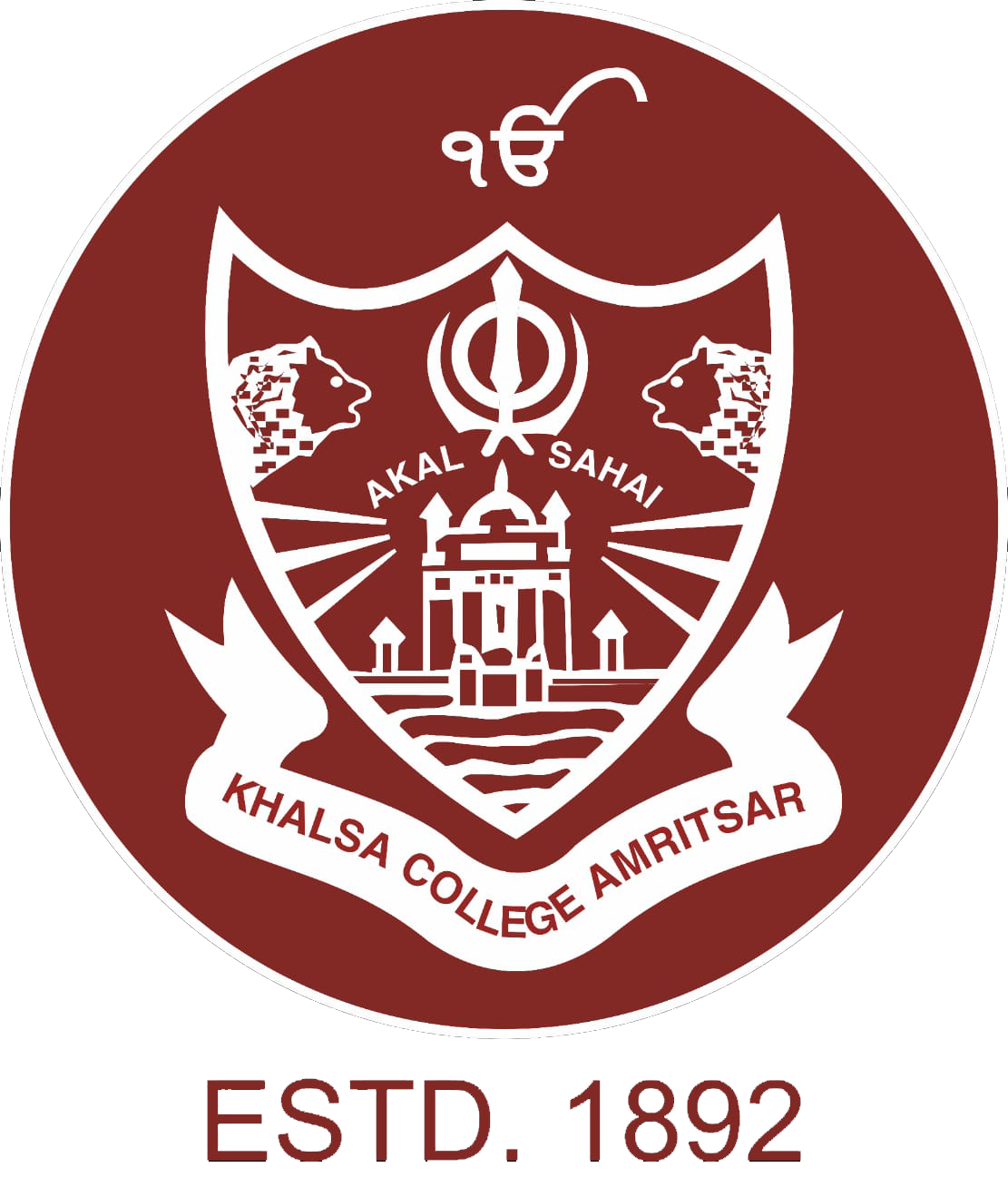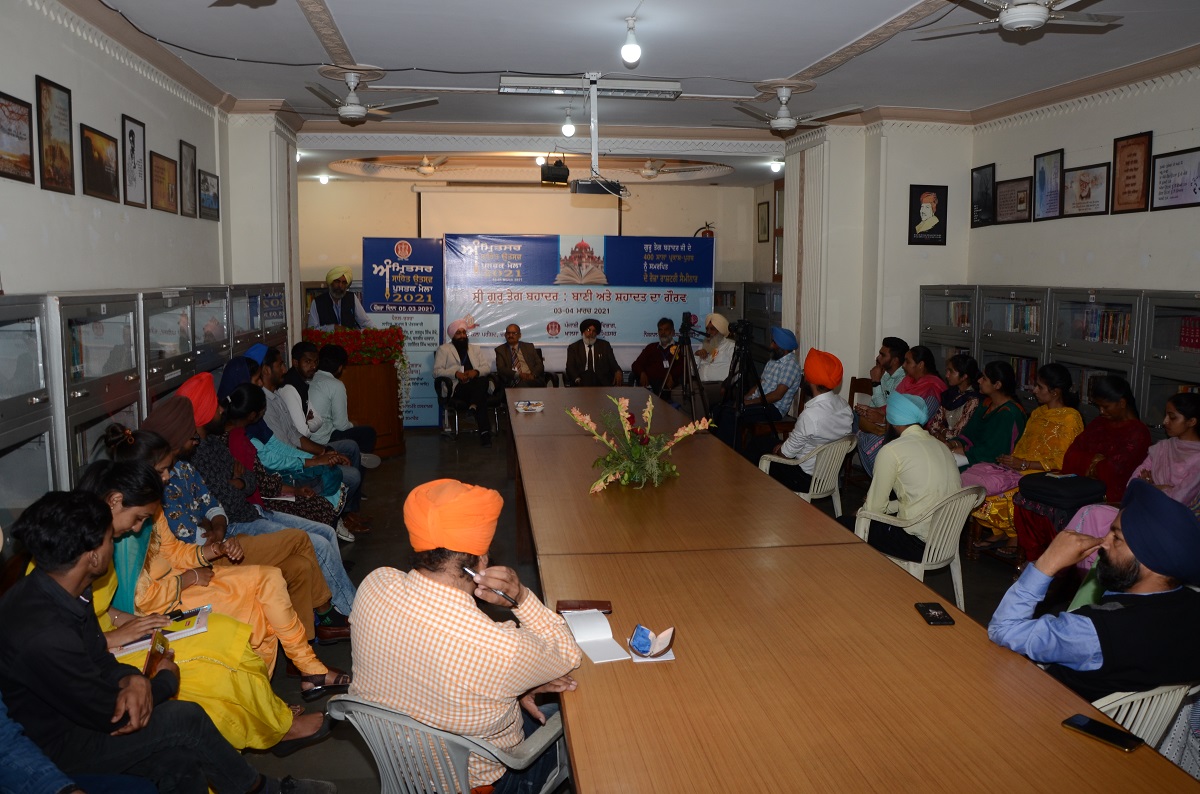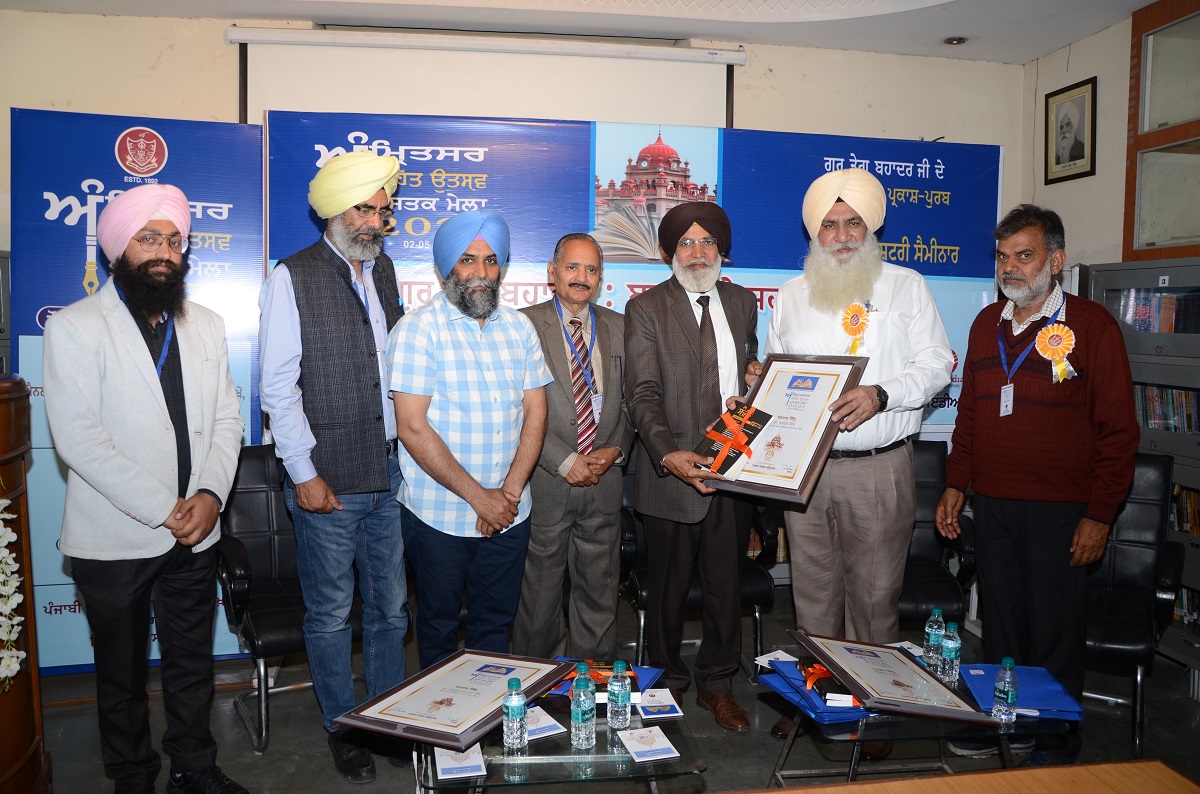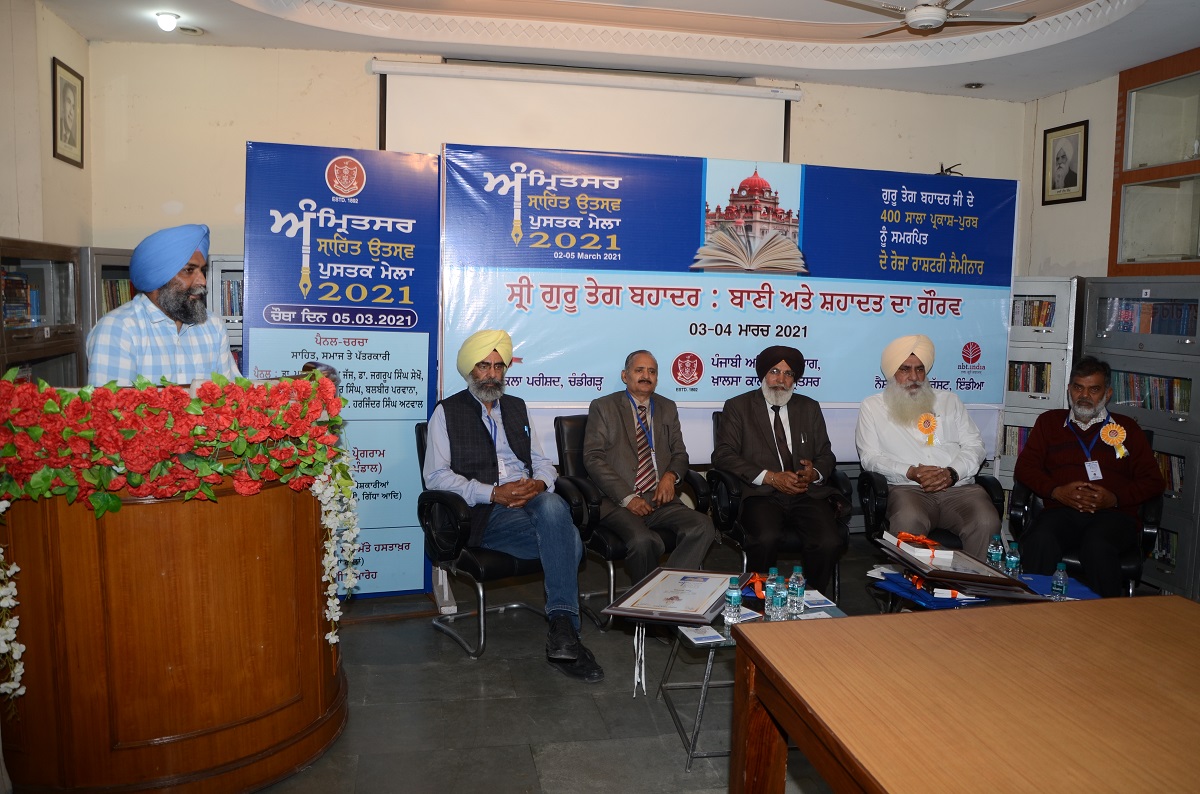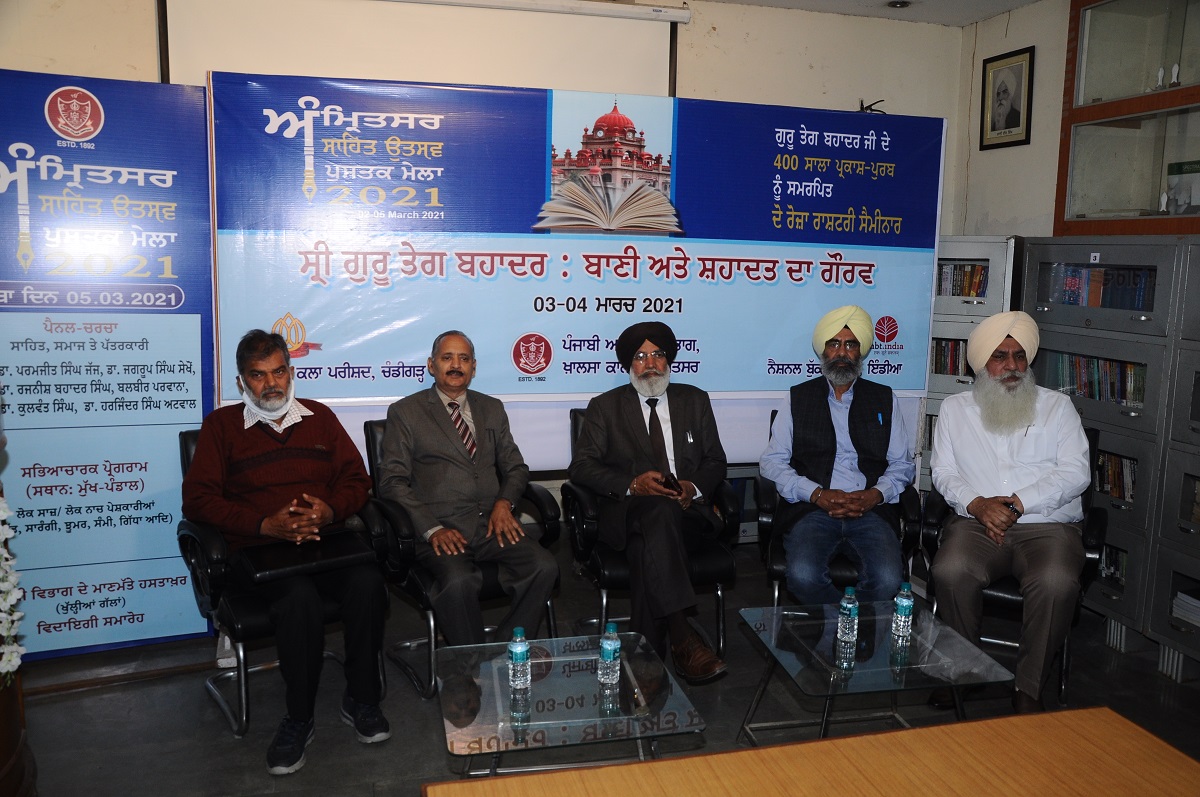About the College
ਖ਼ਾਲਸਾ ਕਾਲਜ ਅੰਮ੍ਰਿਤਸਰ ਦਾ ਆਪਣਾ ਸਦੀਆਂ ਦਾ ਇਤਿਹਾਸ ਹੈ। ਇਸ ਮਹਾਨ ਸੰਸਥਾ ਨੂੰ ਬਣਾਉਣ ਲਈ ਪੰਜਾਬ ਦੀਆਂ ਨਾਮਵਰ ਹਸਤੀਆਂ ਨੇ ਸੰਨ 1883 ਈ. ਵਿਚ ਮਤਾ ਪਾਸ ਕੀਤਾ ਸੀ। ਫਿਰ ਫਰਵਰੀ 22, 1890 ਈ. ਵਿਚ ਖਾਲਸਾ ਕਾਲਜ ਸਥਾਪਨਾ ਕਮੇਟੀ ਬਣਾਈ ਗਈ ਸੀ। ਇਸ ਕਮੇਟੀ ਦੇ ਪ੍ਰਧਾਨ ਡਬਲਿਊ.ਆਰ.ਐੱਮ. ਹਾਲਰਾਇਡ ਸਨ। ਮਾਰਚ 5, 1892 ਈ. ਨੂੰ ਸਰ. ਜੇਮਜ਼ ਬਰੌਡਵੁੱਡ ਲਾਇਲ ਨੇ ਇਸ ਸੰਸਥਾ ਦਾ ਨੀਂਹ ਪੱਥਰ ਰੱਖਿਆ। ਮੁੱਢਲੇ ਪੜਾਅ ਉੱਤੇ 22 ਅਕਤੂਬਰ 1893 ਈ. ਨੂੰ ਖ਼ਾਲਸਾ ਮਿਡਲ ਸਕੂਲ ਸ਼ੁਰੂ ਹੋਇਆ ਸੀ।
ਸੰਨ 1896 ਈ. ਨੂੰ ਗੁਰਦੁਆਰਾ ਸਾਹਿਬ ਦੀ ਨੀਂਹ ਰੱਖੀ ਗਈ। ਸੰਨ 1897 ਈ. ਨੂੰ ਕਾਲਜ ਵਿਚ ਪਹਿਲੀ ਵਾਰ ਡਿਗਰੀ ਪੱਧਰ ਦੀਆਂ ਕਲਾਸਾਂ ਆਰੰਭ ਹੋਈਆਂ। ਇਸ ਦੌਰਾਨ 17 ਨਵੰਬਰ 1904 ਈ. ਨੂੰ ਖ਼ਾਲਸਾ ਕਾਲਜ ਦੀ ਇਸ ਅਦੁੱਤੀ ਇਮਾਰਤ ਦਾ ਨੀਂਹ ਪੱਥਰ ਸਰ ਚਾਰਲਸ ਰੀਵਾਜ਼, ਲੈਫ਼ਟੀਨੈਂਟ ਗਵਰਨਰ ਪੰਜਾਬ ਨੇ ਰੱਖਿਆ ਸੀ। ਕਾਲਜ ਦੀ ਇਮਾਰਤ ਦਾ ਡਿਜ਼ਾਇਨ ਆਪਣੇ ਵੇਲੇ ਦੇ ਮਸ਼ਹੂਰ ਆਰਕੀਟੈਕਟ ਭਾਈ ਰਾਮ ਸਿੰਘ ਨੇ ਤਿਆਰ ਕੀਤਾ। ਵਿਦਿਆਰਥੀਆਂ ਦੀ ਰਿਹਾਇਸ਼ ਲਈ ਨਾਭਾ, ਫਰੀਦਕੋਟ, ਹਰਗੋਬਿੰਦ ਤੇ ਜੀਂਦ ਹੋਸਟਲ ਤਿਆਰ ਕੀਤੇ ਗਏ। ਇਸਦੇ ਨਾਲ ਹੀ ਡਿਸਪੈਂਸਰੀ, ਲਾਇਬਰੇਰੀ ਅਤੇ ਸਟਾਫ਼ ਦੇ ਕੁਆਟਰਾਂ ਦੀ ਉਸਾਰੀ ਵੀ ਕੀਤੀ ਗਈ। ਰਿਆਸਤਾਂ ਦੇ ਰਾਜਿਆਂ, ਮਹਾਰਾਜਿਆਂ ਤੇ ਸਰਦੇ-ਪੁੱਜਦੇ ਲੋਕਾਂ ਨੇ ਕਾਲਜ ਦੀ ਉਸਾਰੀ ਲਈ ਹਜ਼ਾਰਾਂ-ਲੱਖਾਂ ਰੁਪਏ ਦਾ ਦਾਨ ਦਿੱਤਾ।
ਇਸ ਸੰਸਥਾ ਲਈ ਪੰਜਾਬ ਦੇ ਹਰ ਕਿਸਾਨੀ ਪਰਿਵਾਰ ਨੇ ਵੀ ਦੋ ਆਨੇ ਫ਼ੀ-ਏਕੜ ਸੈੱਸ ਵਜੋਂ ਆਪਣਾ ਯੋਗਦਾਨ ਪਾਇਆ। ਸੰਨ 1917 ਈ. ਨੂੰ ਖਾਲਸਾ ਕਾਲਜ ਆਪਣੀ ਇਸ ਵਿਰਾਸਤੀ ਇਮਾਰਤ ਵਿਚ ਪੂਰੀ ਸ਼ਾਨੋ-ਸ਼ੌਕਤ ਨਾਲ ਕਾਰਜਸ਼ੀਲ ਹੋਇਆ। ਇਸ ਕਾਲਜ ਦਾ ਮੰਤਵ ਨਵੇਂ ਯੁੱਗ ਦੀ ਵਿਗਿਆਨਕ ਵਿਦਿਆ ਦੇਣ ਦੇ ਨਾਲ-ਨਾਲ ਆਪਣੇ ਅਮੀਰ ਵਿਰਸੇ ਨੂੰ ਸੰਭਾਲਣਾ ਵੀ ਹੈ। ਇਸ ਇਤਿਹਾਸਕ ਸੰਸਥਾ ਨੇ ਸਪੋਰਟਸ, ਡਿਫੈਂਸ, ਐਗਰੀਕਲਚਰ, ਸਿਵਲ ਸਰਵਿਸ, ਸਿੱਖਿਆ ਅਤੇ ਰਾਜਸੀ ਖੇਤਰ ਵਿਚ ਬਹੁਤ ਨਾਮਵਰ ਅਲੂਮਨੀ ਪੈਦਾ ਕੀਤੇ ਹਨ।
ਇਸ ਕਾਲਜ ਨੂੰ ਯੂ.ਜੀ.ਸੀ. ਵੱਲੋਂ ਆਟੌਨਮਸ ਕਾਲਜ ਦਾ ਦਰਜਾ ਪ੍ਰਾਪਤ ਹੈ। ਇਸ ਵਿਚ 08 ਰਿਸਰਚ ਡਿਗਰੀ ਕੋਰਸ, 32 ਮਾਸਟਰ ਡਿਗਰੀ ਕੋਰਸ ਅਤੇ 27 ਅੰਡਰ ਗ੍ਰੈਜੂਏਟ ਕੋਰਸ ਚੱਲ ਰਹੇ ਹਨ। ਇਸ ਤੋਂ ਇਲਾਵਾ ਕਿਸਾਨ ਸਿਖਲਾਈ ਸੈਂਟਰ ਤੇ ਲਾਈਫ਼ ਲੌਂਗ ਲਰਨਿੰਗ ਪ੍ਰੋਗਰਾਮ ਅਧੀਨ ਕਈ ਹੋਰ ਕਿੱਤਾ-ਮੁਖੀ ਵੋਕੇਸ਼ਨਲ ਕੋਰਸ ਕਰਵਾਏ ਜਾਂਦੇ ਹਨ। ਇਹ ਇਤਿਹਾਸਕ ਕਾਲਜ ਸੰਸਾਰ ਪੱਧਰ ਉੱਤੇ ਪੰਜਾਬੀਆਂ ਦੀ ਕੌਮੀ ਵਿਰਾਸਤ ਵਜੋਂ ਜਾਣਿਆ ਜਾਂਦਾ ਹੈ।
History of Khalsa College: Khalsa College Amritsar with a glorious history of 130 years,
has become a significant landmark in the field of quality education. The eminent personalities of the time adopted a
resolution for the establishment of Khalsa College in 1883. With this laudable venture in mind, Khalsa College Establishment
Committee was formed in 1890, with Colonel W.R.M. Holroyd as its President. On 5th March, 1892, Lt. Governor of Punjab,
Sir James Boradwood Lyall laid the foundation stone of the college.
In the formative years, Khalsa School up to Middle standard was opened on October 22, 1893 and later in 1896 the
foundation stone of the Gurudwara was laid. The first-year class of the College was started on May 18, 1897.
The ceremony of laying the foundation stone of the main building of the College was performed by Sir Charles Rivaz,
Lt. Governor of Punjab on November 17, 1904. The lay-out plan of the majestic and stately building of Khalsa College
was prepared by S. Ram Singh, Vice principal, Mayo School of Arts, Lahore.
The construction was carried out under the supervision of reputed engineer S. Dharam Singh. Four Boys' Hostels viz. Nabha,
Faridkot, Hargobind and Jind, Staff quarters and a dispensary were constructed. The College became fully functional in 1917.
The College was established with a mission to impart scientific and technological education and to synchronize tradition with
modernity. It takes pride in its Alumni who have made name in the field of Sports, Defence, Agriculture, Civil Services,
Education and Politics. The pattern of its growth has kept a matching relevance by introducing new courses in the changing
times.
The college has been conferred the status of Autonomous College by UGC. 08 Research Degree Courses (M.Phil.), 32 Master Courses
& 27 Under Graduate Courses are being run by the college. The college also imparts vocational education through courses run under
Farmers' Training Centre and Life Long Learning Programme. It is globally recognized as Sikh Cultural Heritage of Punjab.
Copyright Options
Copyright allows you to protect your original material and stop others from using your work without your permission. SANVAD follows the open access policy in principle.
Disclaimer
The authors' views are their own in their articles. The Editor/ Editorial Board is not responsible for them. All disputes concerning the Journal shall be settled in Amritsar Jurisdiction only.
Open Access
This journal gives authors and readers the option to publish open access via our website www.sanvad.org.

